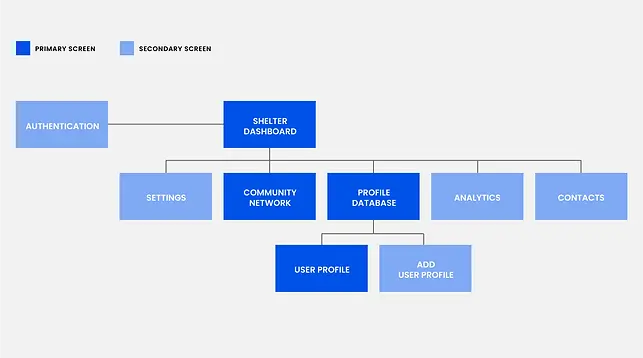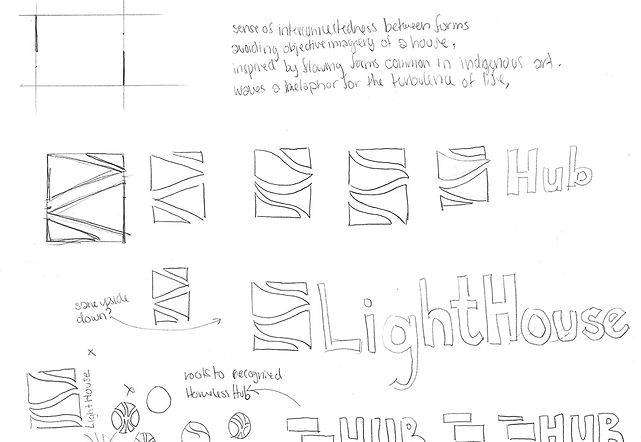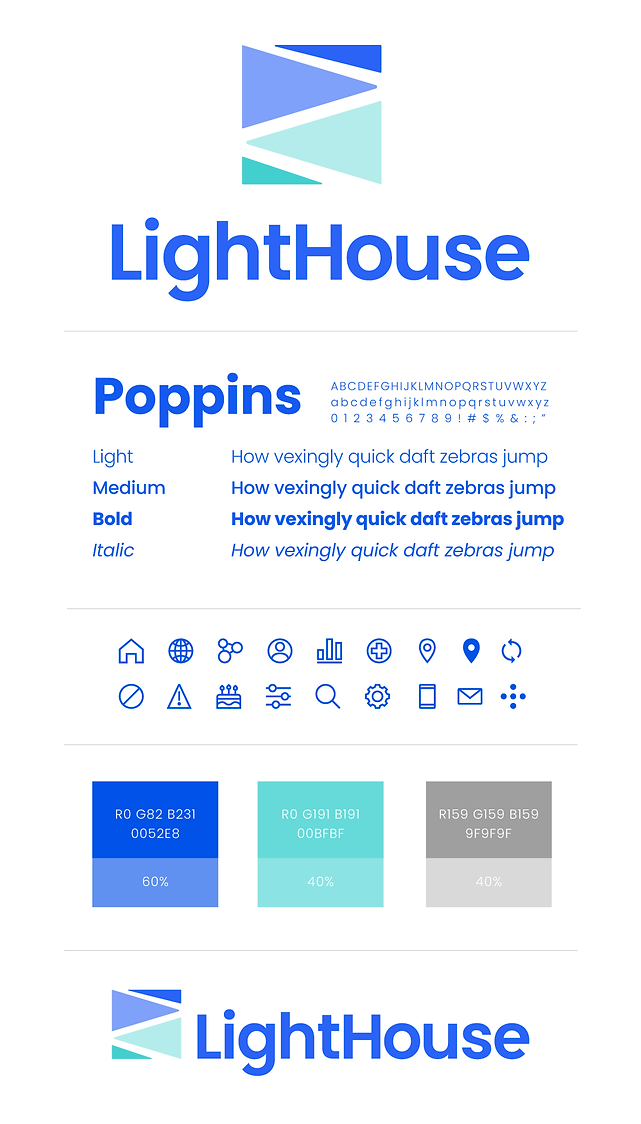LightHouse
SERVICE DESIGN / UX DESIGN
A systems integration platform for service providers across the homelessness network.
Communication and coordination are foundational steps in the fight to make homelessness rare, brief, and non-recurring. LightHouse is a conceptual prototype that bridges this foundational communication gap by offering shelters and service providers a unified platform for sharing data in real time.
DATE
Jan – March 2023
Independent
TEAM
ROLE
UX Designer &
Researcher
CONTEXT

DESIGN CHALLENGE
How might we leverage user-centered design to develop solutions for the Canadian housing crisis?
Challenge provided by Hackworks Design for Change 2023 organizers
STAGE 1
Discovery
SPEAKER SESSIONS
The discovery phase kicked off with a series of speaker sessions hosted by the Hackworks organizers. Speakers came from a range of backgrounds, sharing personal stories and answering questions.
LITERATURE SEARCH
The speaker sessions helped direct a literature search where I analyzed a number of academic papers and documentaries to gain more insight into the current state of homelessness in Canada.

From the Front Lines, a documentary film on front-line organizations and social workers in Saint John.
KEY FINDINGS
Homelessness is preventable.
By providing the appropriate resources
homelessness becomes rare, brief, and
non-recurring.
It is caused by a flawed system.
There are a lot of misconceptions around causes of homelessness, that ultimately come down to gaps in the current system.
A coordinated approach is needed.
“Homelessness service providers must work
within a coordinated system with shared goals and data sharing” (Gaetz 2017).
STAGE 2
Define
SHELTER INTERVIEW
An interview with a local emergency shelter employee further illuminated key problems in homelessness response. In the interview, they also emphasized a key issue: the lack of a coordinated approach.
KEY INSIGHT
Organizations tend to operate independently with no data sharing across the network. Due to this, individuals experiencing homelessness are at a great disadvantage when trying to leverage resources across the system.

New recovery spaces at Calgary Drop-In Centre. Image Courtesy of Aryn Toombs for Livewire Calgary.
DESIGN OPPORTUNITIES
Systems Integration
REQUIRES
A formalized approach to planning, service delivery, and management.
CREATES
A "no wrong door" approach where people are supported equally across all services.
Real-time Personal Data
REQUIRES
Coordination across shelters, services, and outreach teams to collect data.
CREATES
The ability to identify everyone experiencing homelessness by name and in real-time.
Data-driven Investments
REQUIRES
Coordinated, real-time data to reveal gaps where the system can be improved.
CREATES
The possibility for data-informed investments and allocation of resources.
STAGE 3
Develop
INTERFACE FLOW
The functionality and flow for the platform were developed based on conversations with community members. Primary screens were selected for the prototype to showcase the most vital functionality.
KEY INSIGHT
Minimalism is prioritized to increase efficiency for front-line workers.

EARLY WIREFRAMES
Sketches and low-fidelity wireframes were used to begin visualizing the structure of the platform.
TOOLS USED
Adobe XD
IDENTITY DESIGN
Every element of the visual identity, including a custom icon set, was designed to prioritize accessibility and legibility.
TOOLS USED
Pen and paper
Adobe Illustrator


STAGE 4
Deliver
CONCEPT FUNCTIONALITY
KEY FUNCTION
Cross-Network Access
Shelters and homelessness service providers
share access to this integrated platform as a
united front against homelessness.
KEY FUNCTION
Occupancy Reports
Logging user location and housing status
allows for the tracking of shelter occupancy
levels across the network
KEY FUNCTION
User Profile Data
Collecting Detailed, person-specific data allows for more efficient triage, ensuring homelessness is as brief as possible.
SECONDARY FUNCTION
Network Analytics
With a constantly updating community
dataset, analytics can be used to identify
service gaps and community needs
KEY FUNCTION
Real-Time Updates
The homelessness sector does not abide
the rules of 9-5 life. Quick and accurate
information is integral at all hours.
SECONDARY FUNCTION
Emergency Contacts
All necessary contacts are available at a
single press at any given time to ensure staff
are supported through the toughest moments.
LEVERAGED TECHNOLOGY
Google Plus Codes
A free open source technology from google
that “are like street addresses for people or
places that don’t have one” (Google n.d).
Recommendations AI
Recommendations AI integrates user data
and catalog data to make recommendations
aligned to the users needs.
Forecasting AI
By leveraging internal logged data and
external variable data, Forecasting AI is
able to provide predictive analytics.
SHELTER DASHBOARD
Review the shelter dashboard at a glance with
essential information and forecasted analytics.
FEATURES
-
Current shelter occupancy
-
Differentiates operating and max capacity
-
Forecast AI predicts daily occupancy
-
Registered profiles preview
-
Quick reference contact information
-
Page refresh button and last refresh log

COMMUNITY NETWORK
Search the registered service network with keywords and filters to find the best-suited resources for unique client needs.
FEATURES
-
Interactive map
-
Selectable locations
-
Location information overview
-
Current occupancy for shelters
-
Keyword database search
-
Search result filters

PROFILE DIRECTORY
The user directory is updated in real-time as profiles are modified from across the service network. Filters allow for the selection of specific profiles for directed tasks and follow ups.
FEATURES
-
Comprehensive housing status labels
-
Label colour coordination for scanability
-
Critical FYI notification icons in list view
-
Keyword database search
-
Search result filters
-
Ability to add a new profile

PROFILE OVERVIEW
An overview of the individual profile space.
This detailed information allows the network to
holistically support users along their journey.
FEATURES
-
Change the history log
-
Update signatures with date and location
-
Google Plus Codes for precise location logs
-
Recommendation AI for suggested services
-
Banner for critical notifications
-
Tabbed sub-screens for detailed records

REFLECTION
Project Takeaways
Problem Complexity
The need for data sharing is a prominent topic in the discussion on homelessness. LightHouse introduces a foundational example of a platform that can facilitate a coordinated approach in ensuring homelessness is rare, brief, and non-recurring. However, this is a small step in a large-scale wicked problem that requires coordinated and consistent effort to resolve.
Value (and limits) of Empathy Building
As designers, we prioritize empathy building and applying human-centred design principles to arrive at meaningful solutions, even amongst novel topics. However, I was quickly humbled by this project to realize just how little I actually knew about homelessness. My biggest takeaway from this project is the reminder that we have two ears but only one mouth for a reason: to listen, to learn, and to hold compassion for those whose journeys look different than our own.





